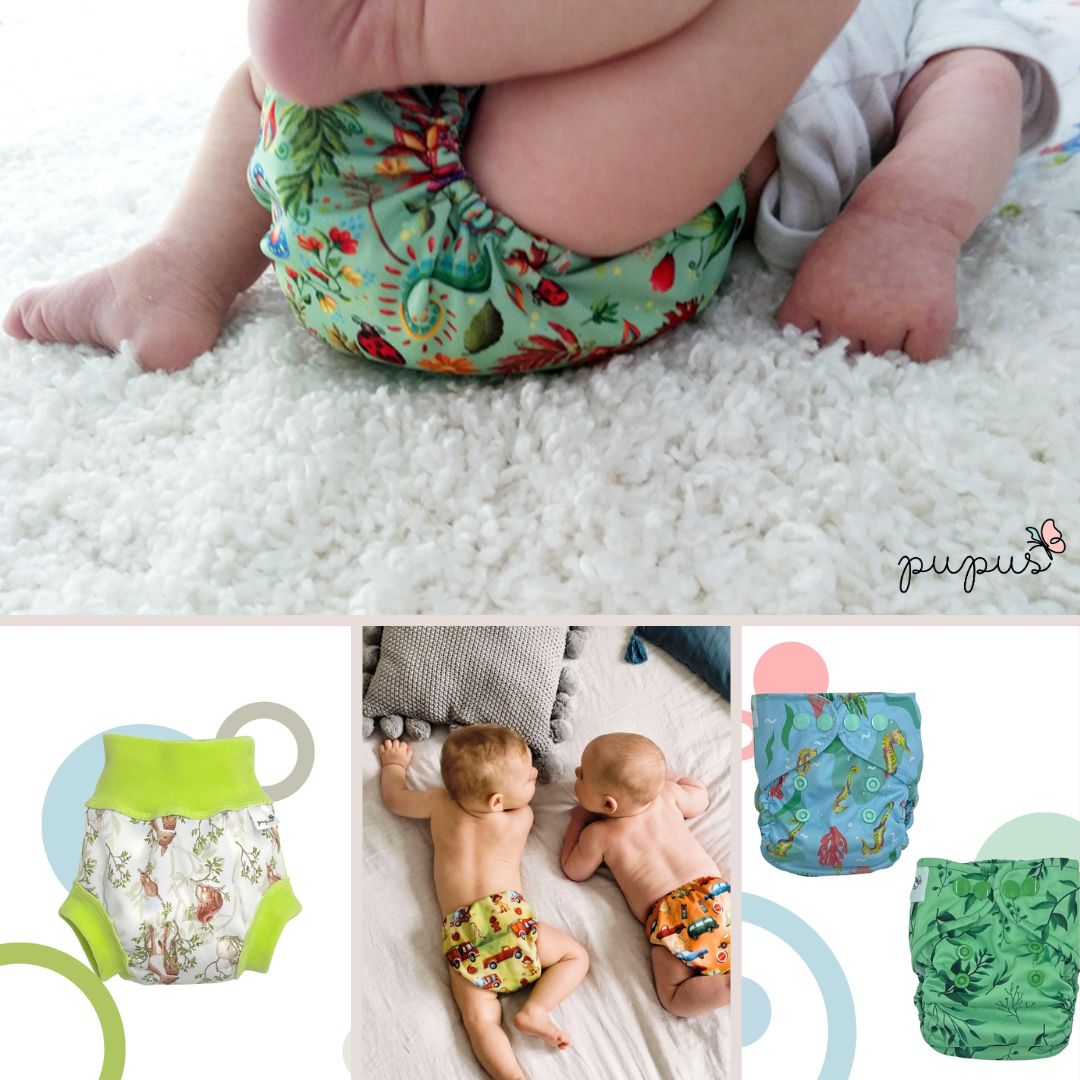Reusable diapers – what to start with for a newborn

You are preparing for the arrival of your beloved baby. It's no secret that the end of pregnancy is usually an intense time of preparing a kit for the newborn. You want to use reusable diapers – that's great. But then the question quickly arises: reusable diapers – what to start with for a newborn? How to put together a good diaper kit?
First of all – reusable diapers – what to start with for a newborn? When a newborn arrives at home, parents begin to face a considerable problem. Namely – frequent diaper changes. Let's not kid ourselves: babies pee and poop very often. If they are breastfed, they poop practically after every feed (and there are quite a few of those during the day).
Which reusable diapers should you choose to cope with all this?
Newborn covers– i.e. those for newborns – work perfectly. Why covers? A cover is a diaper that only has a waterproof outer layer. For it to work properly, an appropriate absorbent insert must be placed inside the cover.
For newborns, covers are ideal due to the frequency of bowel movements. If the cover does not get dirty or wet, it is usually enough to replace only the absorbent insert. This reduces the number of covers needed for diapering.
A great feature of our Pul diapers is that they dry quickly (and will probably be washed every day).
An alternative to cover diapers are pull-ups. Many mothers praise them for their exceptional softness and ease of use. Zero nap, ultra-soft fleece plus external seams for maximum freedom and comfort. Under the pull-ups, we put a molded insert as an absorbent layer.
Reusable diapers – what to start with for a newborn? How many should you buy?
I suggest limiting the purchase of covers for newborns. The reason is simple – babies will quickly outgrow the newborn size and will be able to wear one-size diapers. For full diapering of a newborn, 4-5 covers and at least 24 absorbent inserts (and/or terry cloth diapers) are sufficient.
Secondly – inserts:
As I mentioned above, for reusable diapers, we will need absorbent inserts, fitted diapers, and/or terry cloth diapers. Inserts are nothing more than specially prepared, multi-layered, stitched pieces of suitable material that are highly absorbent. For newborns, the smallest size S inserts will work best. Microfiber inserts, bamboo inserts, extremely absorbent natural inserts, and ready-made fitted diapers are available.
Terry cloth diapers work very well for newborns. First of all, they absorb milk stools very well and dry faster than inserts. When choosing absorbent inserts, it is best to choose the smallest size. The most absorbent are bamboo fitted diapers. I recommend them for longer walks or nighttime diaper changes. Bamboo inserts are also popular with moms. They are lined with microfiber, which absorbs moisture inside and prevents it from escaping.
Thirdly – storing and washing dirty diapers – what to use to wash diapers for a newborn at the beginning?
When using reusable diapers, the issue of storing dirty diapers and the need to wash them arises. While the topic may seem daunting at first, it is actually very easy to deal with and manage. To store dirty diapers, it is best to purchase a plastic bucket with a lid. The bucket seals the diapers tightly and prevents odors from escaping. Such a bucket will be useful for the entire diapering period and even longer (it is worth bearing in mind that even potty-trained children sometimes pee on their clothes – the bucket is then ideal for storing clothes until they are washed). Add a few drops of essential oil to the bucket – I recommend tea tree oil. It neutralizes unpleasant odors and also has disinfecting properties.
Regular washing powder is recommended for washing diapers. It is worth making sure that it contains as little soap as possible. Unfortunately, soap creates deposits in diapers and inserts, which will require thorough cleaning, known as stripping, from time to time. A powder for disinfecting diapers will also come in handy. I also use baking soda to wash diapers. Baking soda whitens diapers and removes grease.
As I mentioned above, you will need about 24 inserts, form-fitting diapers, and/or terry cloth diapers for the entire diapering period. To ensure your child's comfort, you may want to purchase dry bum inserts. These inserts consist of a single layer of microfiber material.
Microfiber wicks moisture away from your child's skin. Disposable paper wipes have a similar effect. The wipes will also help catch poop. After use, they can be flushed down the toilet (if you have a working sewage system) or thrown in the trash. They are eco-friendly and biodegradable.
Fourth – useful accessories. Accessories will also come in handy:
The first is a changing mat. A comfortable, handy, and attractive changing mat can be useful at home, when visiting family or friends, or when going to the store. It is also ideal for trips. It can be successfully laid out on the grass and used as a comfortable insulating mat on which to lay your baby.
The mat is large and will serve you well for a long time.
My real favorite are PUL diaper bags. Bags made of PUL material are waterproof. They are perfect for going out. You can put a dirty diaper or insert in a zippered bag and transport it home without any worries. I use PUL bags when leaving the house. I also take them to the nursery for wet clothes, and until recently, for dirty diapers.
Finally, I recommend our YouTube channel and a video about what to buy for a newborn to be well prepared for cloth diapering.
Recommended

Insert microfiber + microfleece

